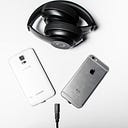Fast Charge, Quick Charge, Super Charge and Dash Charge — What You Need To Know
How does fast charging work?
In a nutshell, these brands and their respective proprietary charging technology just increases the current sent to the battery to fill up its capacity quicker.
The fundamental components concerned with powering your smartphone are the battery, power adapter, charging cable and the charge controller — the chip responsible for regulating the flow of power in and out of the battery. The premise of fast charging a smartphone (or tablet or laptop) hinges on the rate of power flow possible versus the limitations of the components and the safety restrictions in place.
Different standards facilitate different voltage (V), current (A) and wattage (W) values, which paired with the capacity of the battery they’re charging up, dictate the fast charging speeds that are possible.
Different charging protocol
- Oppo’s 5V/4A-Super VOOC Flash Charge produces 20W,
- Huawei’s 10V/4A- Supercharge 2.0 produces 40w,
- Samsung’s 9V/1.7A- Adaptive Fast Charging produces 15W,
- OnePlus’s 5V/4A- Fast Charge produces 20W,
- Power IQ, PumpExpress
Google’s Pixel series utilizes the official Power Delivery specification. Apple also implements the standard in the iPhone 8, iPhone X, and latest MacBooks. Many companies prefer their own proprietary charging standards.
Quick Charge
Quick Charge is an optional feature available with Qualcomm’s Snapdragon processors. So just because a phone has a Qualcomm chip doesn’t mean it is Quick Charge compatible.
In the smartphone ecosystem, many models use in-house technologies rather than the more ubiquitous standards above. However, only a few of these standards are truly proprietary. Many are just Power Delivery or Quick Charge repackaged under a different brand name or featuring some specific tweaks to the technology — Samsung’s Adaptive Charging and Motorola’s Turbo Charging technologies come to mind.
SuperCharge and VOOC
Others like Oppo’s VOOC and Huawei’s SuperCharge operate quite differently. These greatly increase the amount of current for high power charging rather than increasing the voltage. The charging speeds of these proprietary technologies have greatly increased over the years, with SuperCharge, Super VOCC, and OnePlus’ Dash charge being some of the fastest on the market.
Power Delivery
USB Power Delivery (USB-PD) is the official fast charging specification published by the USB-IF back in 2012. Just like all fast charging standards, USB-PD implements a data protocol to communicate between the charger and phone. This negotiates the maximum tolerable power delivery for both the charger and handset.
For laptops, the situation is a bit different. USB Power Delivery isn’t so much fast charging as it is a standard that determines if an adapter or portable power bank is capable of charging a laptop or other high-powered device. With USB-C input/output ports becoming more prevalent, it’s now possible for adapters and portable power banks to charge demanding devices that require an output of 18W or more. The Power Delivery spec allows a device to be charged at a maximum current of 5A or 100W.
